Launching a digital collection
Zachary Bodnar, Archivist at Congregational Library & Archives (CLA) explains the importance of display and metadata when presenting unique assets.
For over a decade the Congregational Library & Archives has run a digitization program called New England’s Hidden Histories (NEHH); the goal of the program has long been to make widely accessible, through digitization, a wide range of church and congregationalist records dating from the early colonial period and into the antebellum.
NEHH now includes over 170 collections and includes more than 4,000 unique documents. Manuscript sermons from the 18th Century make a sizable portion of our digital collections and we wanted to use one of our favourites to explore how display and metadata make the digital object accessible.
Presenting the Boston Massacre sermon
The Boston Massacre Sermon is an unattributed sermon; we unfortunately don’t know who the author is or the exact date, but from context clues we can tell it’s from around 1770.
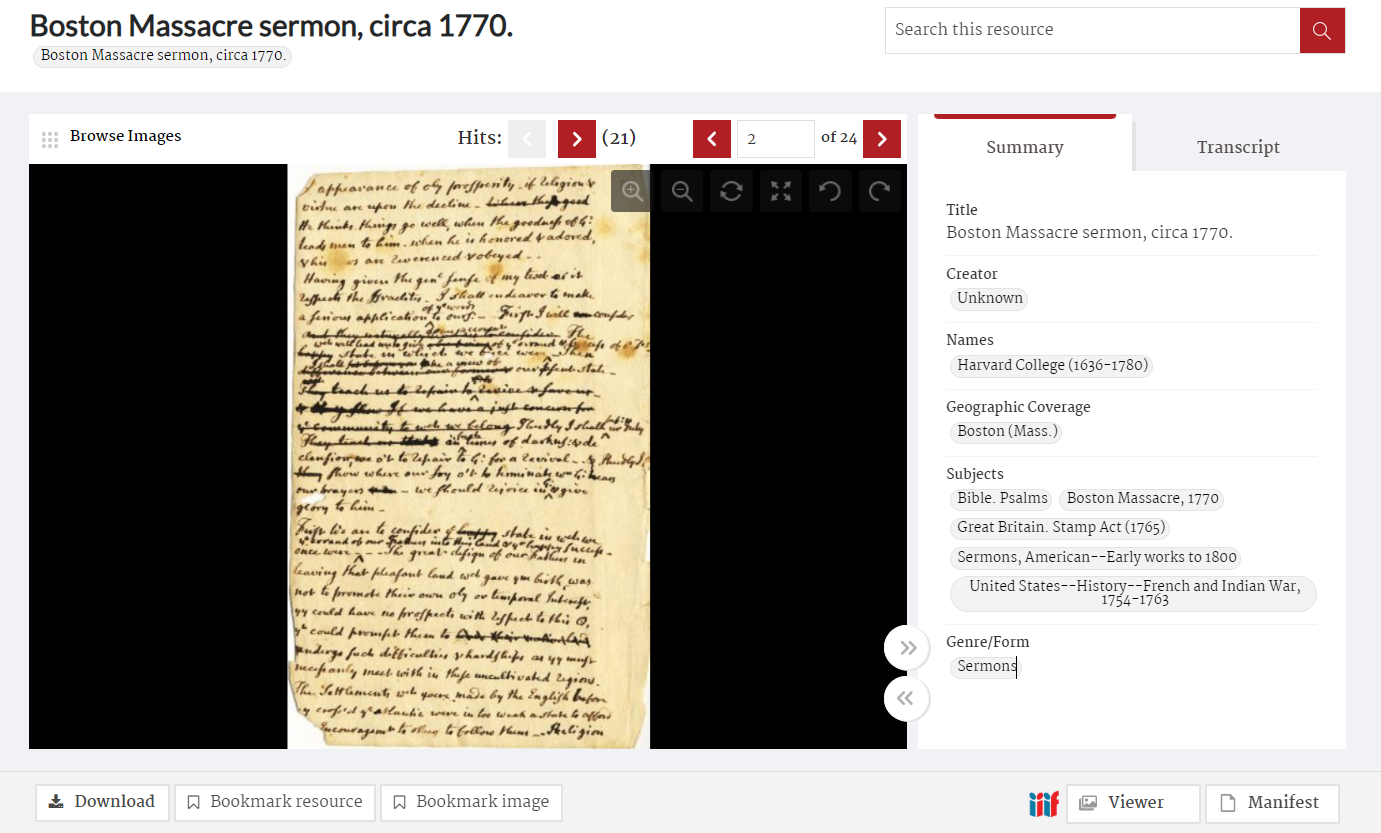
Here is the basic item view with a listing of summary metadata to the right.
Creating accessible metadata
Quartex allows for fully customizable metadata fields – so you can use any schemas you want in any combination, including local ones. We created a tailored model based on both MODS and DCMI, as well as some local fields.
We were able to customize our metadata to be as accurate to our resources as possible, which really helps to streamline things, both for our own internal workflows and for front-end users who are browsing the resources. It allows for a much more faceted and granular search.
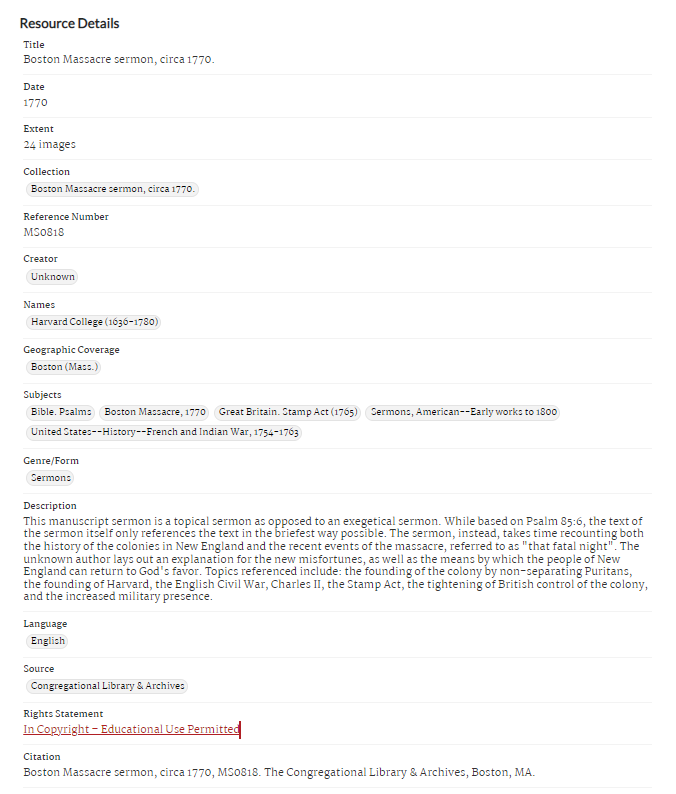
If you scroll down the page on the item view, you get the full complement of metadata.
All the metadata terms are clickable and will take you to a faceted search in which you can view any other resources which include those terms, which is obviously great from an access and discoverability standpoint and represents a huge improvement over the static site where these collections were previously hosted.
The way we accomplish a lot of this is through the use of controlled vocabularies. Creating controlled vocabularies for these fields makes them all directly searchable across all collections.
This browsing capability basically works the same way across any of those fields with a controlled vocabulary.
Here is an example: you can see the LCSH subject headings circled here, including “Bible. Psalms”, (because the verse text of the Boston Massacre sermon is from Psalms).
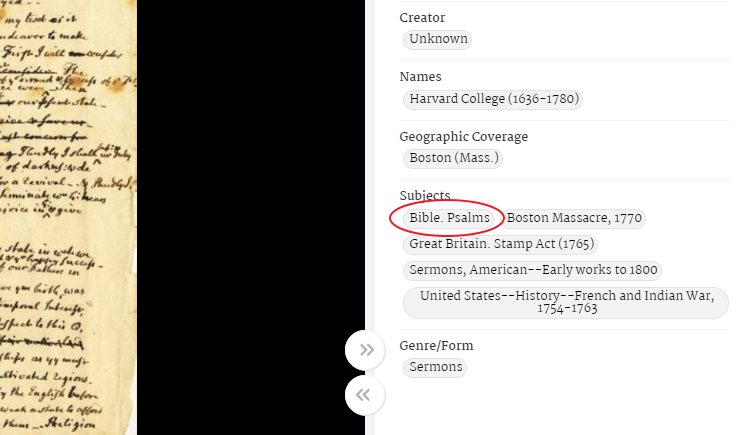
You can then browse all the other sermons that are based on passages from the book of Psalms.

Display as an accessibility feature
Quartex’s viewer lets us upload high quality JPEGs which has been a real boon for readability; before, we manually compressed image files for space-saving purposes.
Where Quartex shines, though, is how it lets users find exactly what they are searching for through display features.
The summary box next to the resource gives us the ability to quickly, and at a glance, let the user know quite a bit about the resource, without them having to navigate anywhere else on the screen.
We’ve chosen to highlight most of our descriptive controlled vocabulary fields, letting users see what the object is about and giving them a means by which to quickly search for similar or related objects.
As part of the New England’s Hidden Histories program, we have created thousands of pages of literal transcription to provide increased accessibility to documents.

We can flip the tab to the transcription box which lets users and screen readers read the raw text version of our transcriptions side-by-side with the original document.
We also provide the literal transcriptions, which are fully formatted, as standalone documents and make extensive use of the related documents fields to link between the original and transcription.
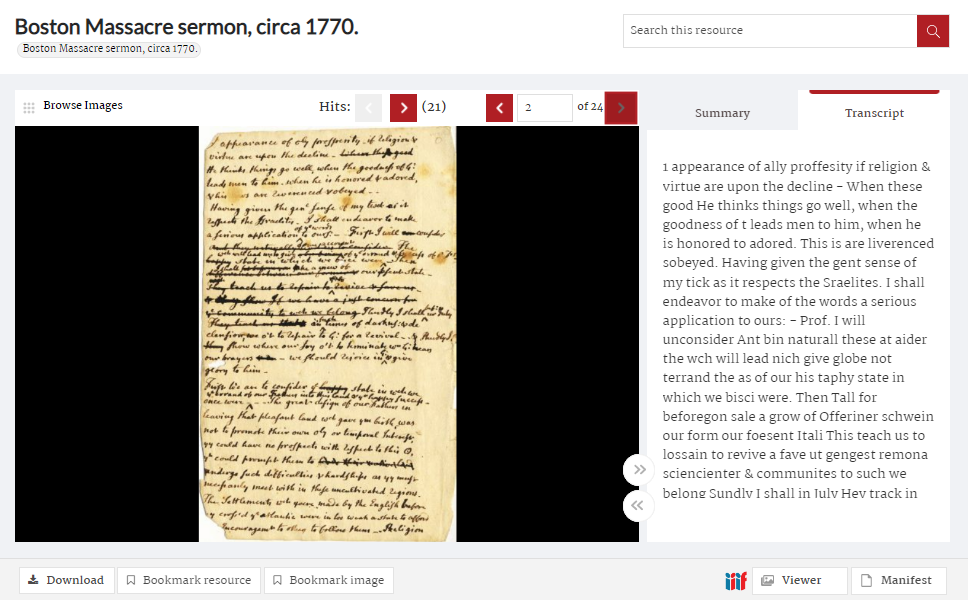
Quartex’s display and navigation features run even deeper though.
With a resource that has been transcribed, you can use the “Search this Resource” box to search within the entire transcript.
Many of our resources are long, with well-defined sections to them, such as sections for marriage records and baptismal records. Instead of forcing a user to page through a resource, we can use “sections” to help users navigate to the place in the records they want.
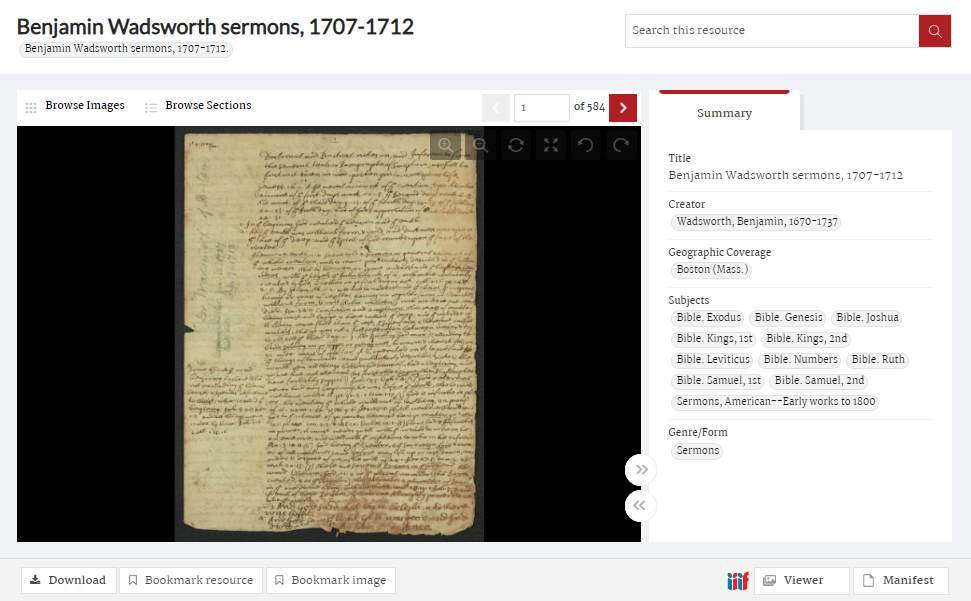
Showcasing accessibility
Display, and metadata, are important components to think deeply about when it comes to making resources accessible and widely available.
I hope that we have been able to showcase some of the ways that Quartex has been allowing us to expand the accessibility of our digital resources. I hope too, that we’ve been able to show that, while this work is long and ongoing, it can be done by a relatively small team.
But at the core, I hope too that we’ve been able to show that focusing on the needs of users is the most important part of increasing accessibility to the vast trove of digital resources held by our institution, and all of our peer institutions.
The Congregational Library & Archives formally launched their new digital archive in the spring of 2022. Read more about the launch here.
Recent posts

The blog highlights American Committee on Africa, module II's rich documentation of anti-apartheid activism, focusing on the National Peace Accord, global solidarity, and student-led divestment campaigns. It explores the pivotal role of universities, protests, and public education in pressuring institutions to divest from apartheid, shaping global attitudes toward social justice and reform.

This blog examines how primary sources can be used to trace the impact of young voices on society, particularly during pivotal voting reforms in the UK and the US. Explore materials that reveal insights into youth activism, intergenerational gaps, and societal perceptions, highlighting their interdisciplinary value for studying youth culture, activism, and girlhood across history.
